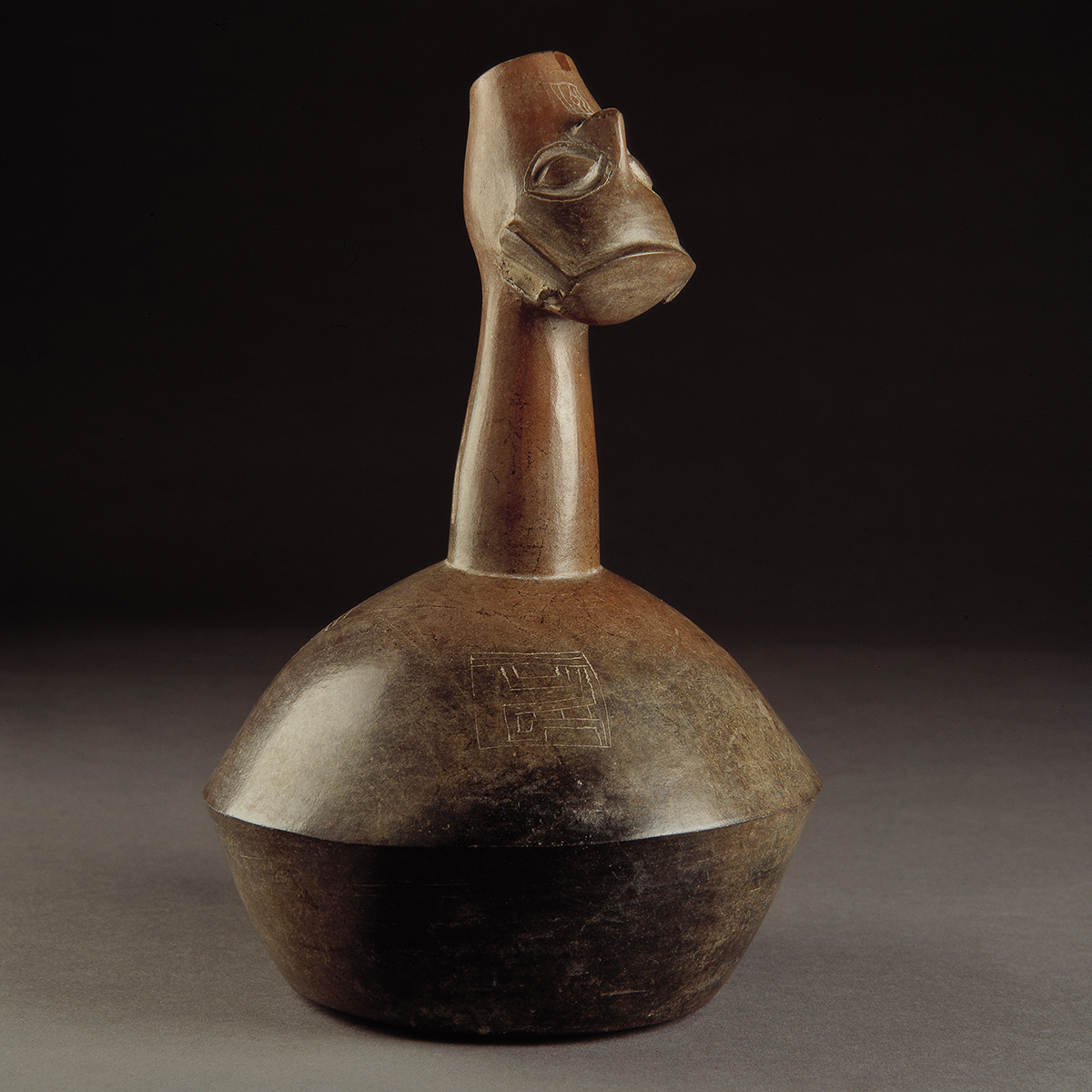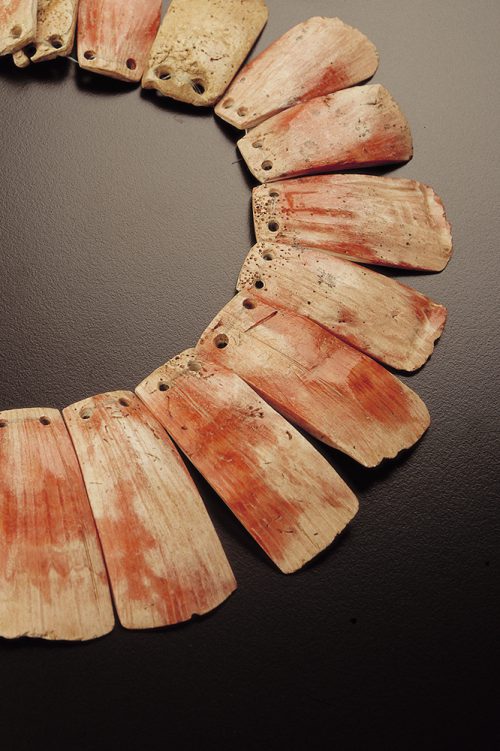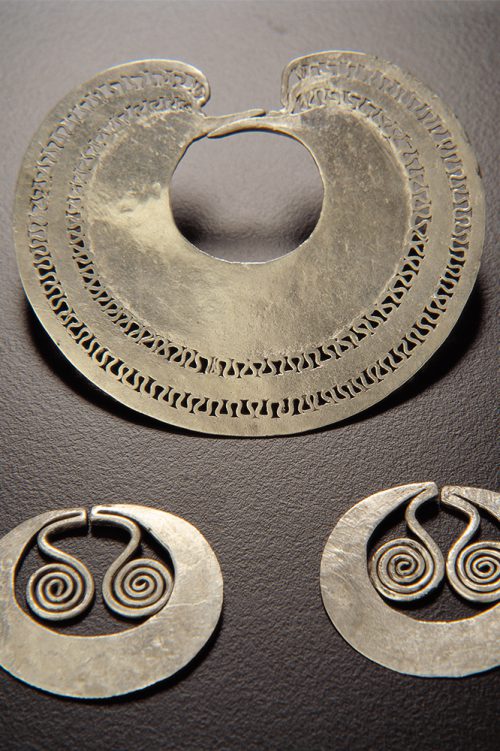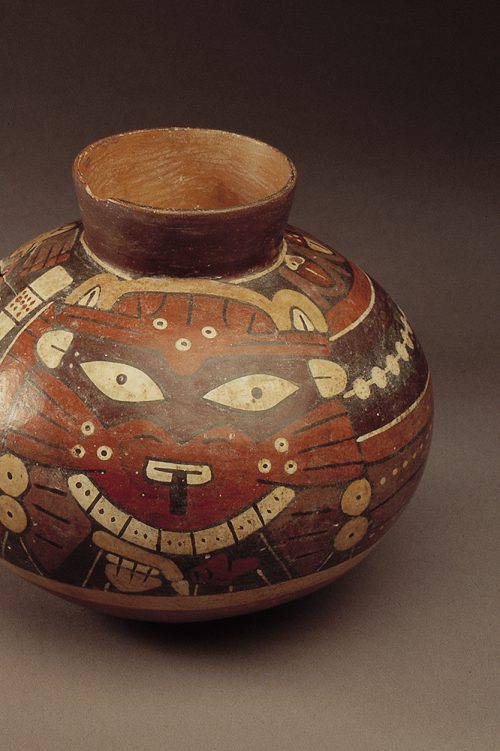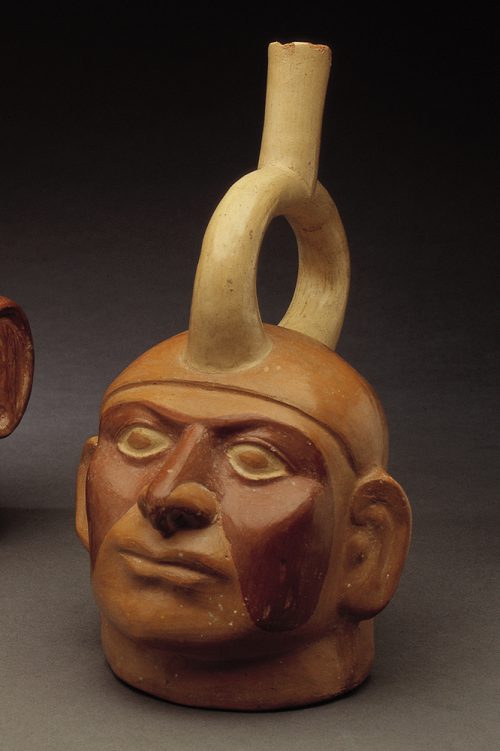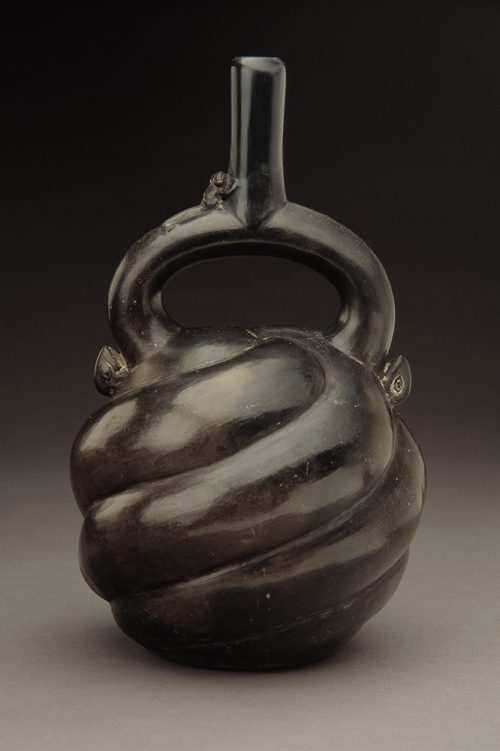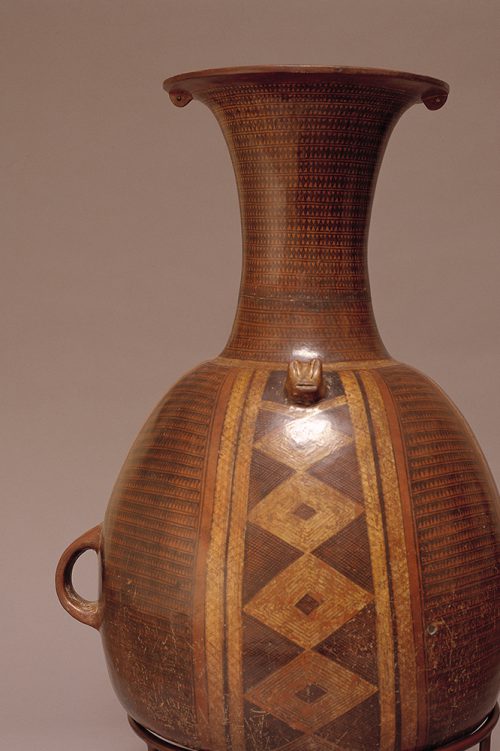COASTAL STATES AND EMPIRES
BEFORE THE INCAS GALLERY
During the 15th century, the Incas consolidated as the largest empire in the southern hemisphere by coming into contact with various societies, including civilizations of the South America Pacific coast. These civilizations included the Chimu state, on the north coast, that exercised their control over the entire North region to the central limit, while the Chancay state evolved on the central coast. Both the black Chimu ceramics and the characteristic white Chancay ceramics were crafted to represent abstract concepts.
ML010437/ML010438
BIRDS, SNAKES AND FELINES
Birds live in and stand for the Hana Pacha snakes, the Uku Pacha, while felines represent the Kay Pacha. Elements of these animals-fangs, claws, feathers, snake heads-are distinctive features appearing in the representations of these societies’ dignitaries and divinities, and although in each culture they had unique aesthetic traits, their conceptual and ideological unity remained unaltered throughout more than three thousand years.
Some pieces at exhibition
CHANCAY CERAMIC PITCHER
- Central coast. Peru
- 1 300 A.D. – 1 532 A.D.
- ML010439
CROSS
Synthetic shapes and designs prevail in Chancay pottery. In this pitcher, the circular lines enclose an area where the center is marked by a cross, in turn delimited by another circle. Several concentric rippling circles in the vessel’s body create a design alluding to the centrifugal expansion from a center point, that is both a marker and simultaneously organizes space. Harmony in design results from the simplicity and sobriety of lines.
CHIMÚ SCULPTORICAL CERAMIC BOTTLE
- North coast. Peru
- 1 300 A.D. – 1 532 A.D.
- ML010515
SPIRALING SNAKE
The traditional symbols of the Andean worldview are continuously reinterpreted and represented in newer forms. This bottle features a two-headed serpent coiled around itself as a spiral, alluding to the constant repetition of cycles and the possibility of a new beginning of life arising from the inner world. A globe-shaped composition is perfectly transformed into a space for cadence and movement.
